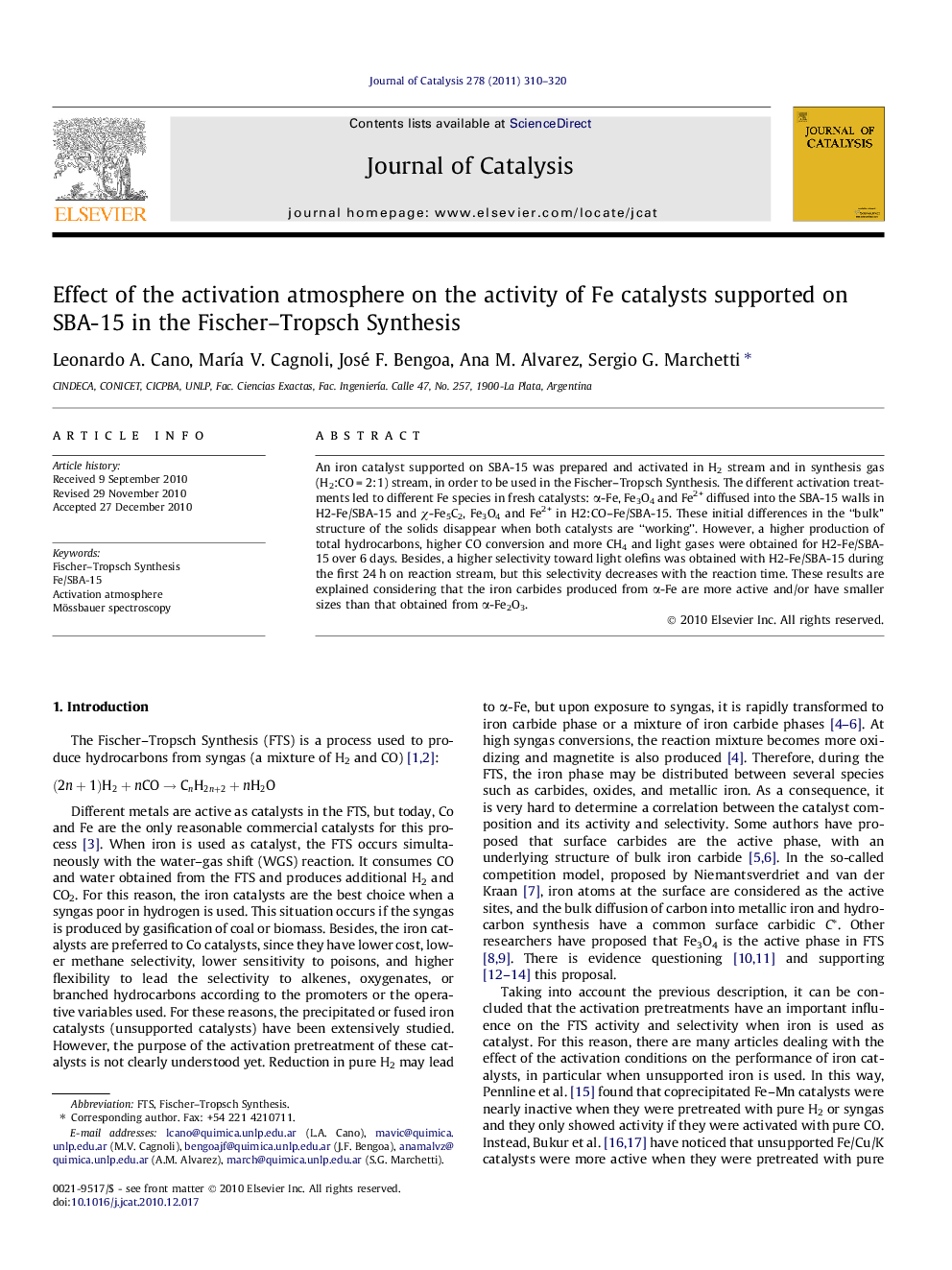| کد مقاله | کد نشریه | سال انتشار | مقاله انگلیسی | نسخه تمام متن |
|---|---|---|---|---|
| 61764 | 47604 | 2011 | 11 صفحه PDF | دانلود رایگان |

An iron catalyst supported on SBA-15 was prepared and activated in H2 stream and in synthesis gas (H2:CO = 2:1) stream, in order to be used in the Fischer–Tropsch Synthesis. The different activation treatments led to different Fe species in fresh catalysts: α-Fe, Fe3O4 and Fe2+ diffused into the SBA-15 walls in H2-Fe/SBA-15 and χ-Fe5C2, Fe3O4 and Fe2+ in H2:CO–Fe/SBA-15. These initial differences in the “bulk” structure of the solids disappear when both catalysts are “working”. However, a higher production of total hydrocarbons, higher CO conversion and more CH4 and light gases were obtained for H2-Fe/SBA-15 over 6 days. Besides, a higher selectivity toward light olefins was obtained with H2-Fe/SBA-15 during the first 24 h on reaction stream, but this selectivity decreases with the reaction time. These results are explained considering that the iron carbides produced from α-Fe are more active and/or have smaller sizes than that obtained from α-Fe2O3.
Fischer-Tropsch synthesis on Fe/SBA-15 supported catalysts was studied to probe the effect of the activation atmosphere on the structural properties. Higher production of total hydrocarbons, higher CO conversion and higher selectivity towards light olefins are obtained when the catalyst is activated in H2. These results are explained considering that the iron carbides produced from α-Fe are more active than that obtained from Fe2O3.Figure optionsDownload high-quality image (61 K)Download as PowerPoint slideResearch highlights
► Fe/SBA-15 activated in different atmospheres was used as Fischer-Tropsch catalysts.
► Different activation treatments led to different Fe species in fresh catalysts.
► These initial differences disappear when the catalysts are “working”.
► H2 activation led to higher total HC production, CO conversion, CH4 and light gases.
► The iron carbides produced from α-Fe are more active than that obtained from Fe2O3.
Journal: Journal of Catalysis - Volume 278, Issue 2, 7 March 2011, Pages 310–320